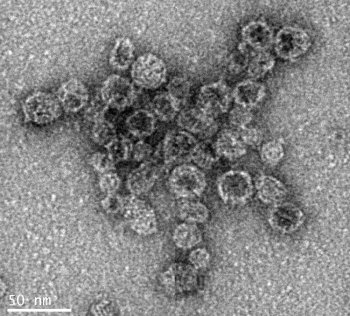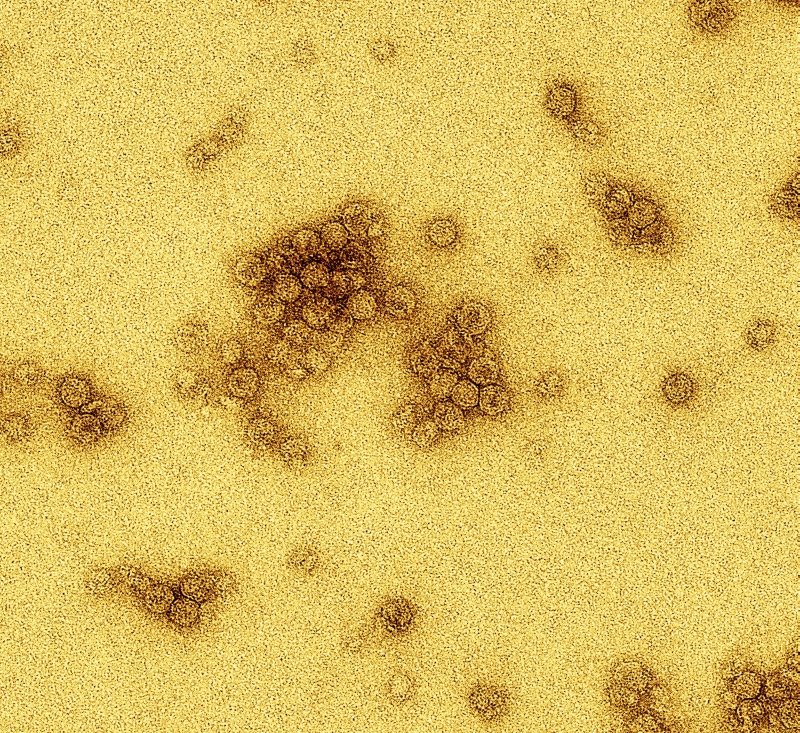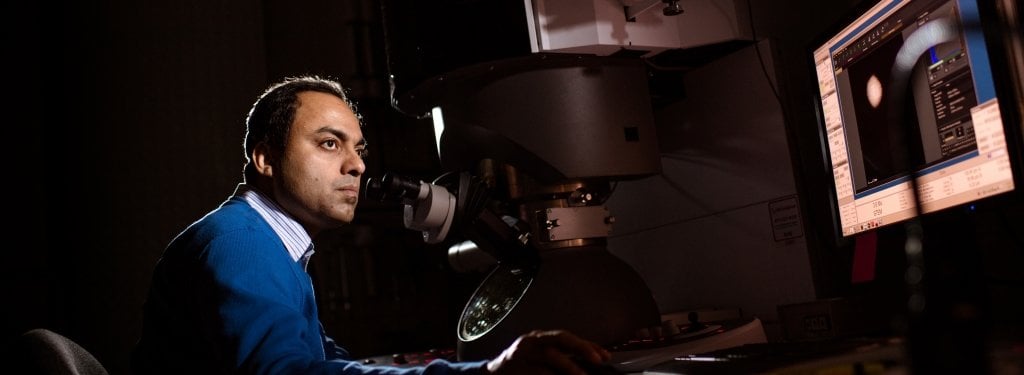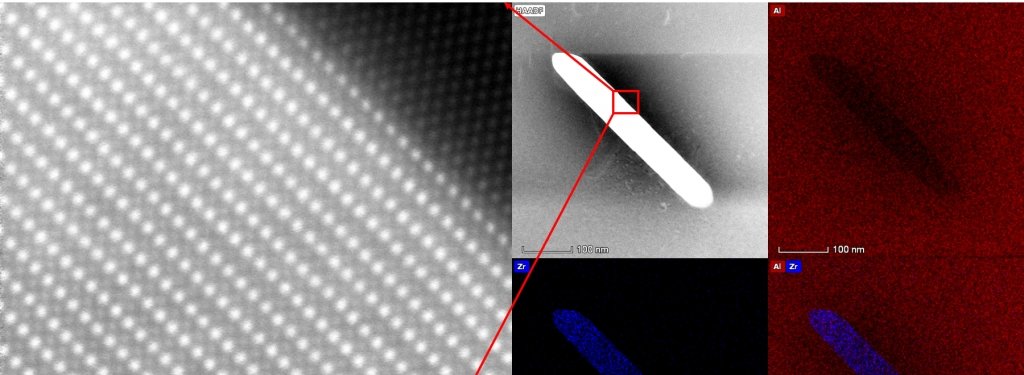Creating vaccines is like concealing a wolf in sheep’s clothing.
Virus-like particles (VLPs) are empty viral shells formed by structural proteins such as coat or envelope proteins. VLPs are used to create vaccines because they elicit immune responses and are noninfectious. Lukai Zhai and Rupsa Basu, graduate students studying with Ebenezer Tumban, assistant professor of biological sciences, use bacteriophage (MS2, PP7, Qβ) VLPs as platforms to develop vaccines against viruses such as human papillomaviruses (HPV), Zika and Chikungunya.

VLP-vaccines can induce higher antibody response than a simple peptide or protein because of their icosahedral structure. However, when a scientist inserts genetically cloned virus capsid protein genes into MS2 VLP genes, the structure has the potential to change, causing the VLP to fall apart. Zhai and Basu use Michigan Tech’s FEI 200kV Titan Themis Scanning Transmission Electron Microscope (S-TEM) to confirm the structure of the VLP after gene insertion.
Biological samples are very sensitive to high-energy electron beams, so this image was made running the microscope at 80 keV in transmission electron microscopy mode, which uses nearly parallel diverging beams. These particles are spherical with varying size between 25 to 30 nanometers.
The result? The disease gets fleeced.

Michigan Technological University is an R1 public research university founded in 1885 in Houghton, and is home to nearly 7,500 students from more than 60 countries around the world. Consistently ranked among the best universities in the country for return on investment, Michigan's flagship technological university offers more than 185 undergraduate and graduate degree programs in science and technology, engineering, computing, forestry, business, health professions, humanities, mathematics, social sciences, and the arts. The rural campus is situated just miles from Lake Superior in Michigan's Upper Peninsula, offering year-round opportunities for outdoor adventure.





Comments